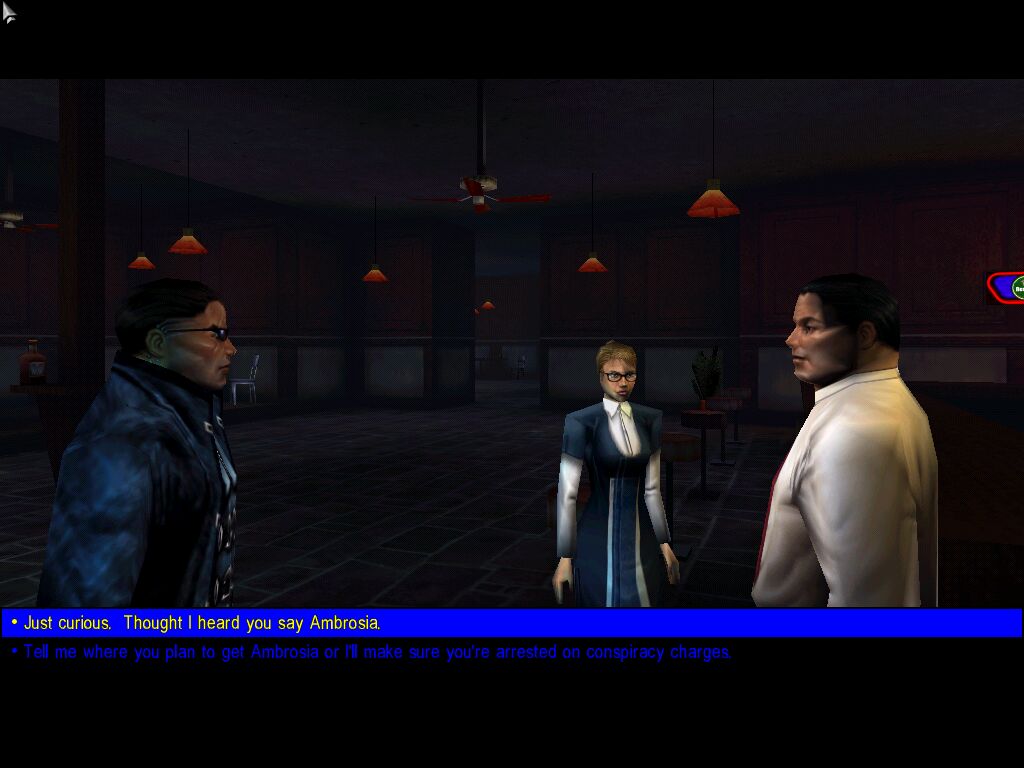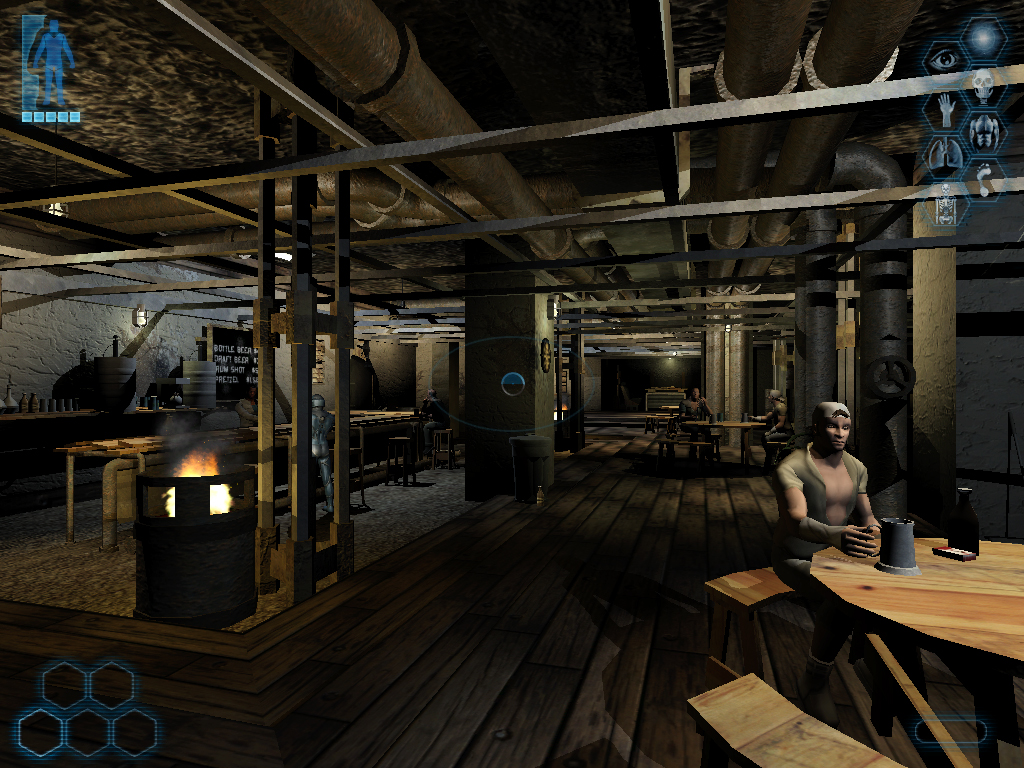So What Can I Expect in Games
to Come?
Like I mentioned before, as the technology for creating games advances, the amount of things a person can do in the game will increase, and the game will look and feel much more realistic. Game developers are aiming to create the most visually pleasing games they can, and physics interactions are a big part of that. In the September 2002 issue of PCGamer, a critical look is given into Ion Storm's current project, DX2: Invisible War, sequel to the best-selling hit Deus Ex. Steve Powers, the game's designer, puts an emphasis on how realistic physics will enhance the gameplay of the stealth-shooter game. "Our physics processes allow us to simulate the environment and give the player consistent rules, and possible tools, that let the player create solutions to problems. Solutions are the products his own ingenuity, not the designers' intention." (PCGamer, 42) Powers goes on to describe a situation in which the player can bounce some barrels down the stairs to distract a guard (whom is knocked down by a second bouncing barrel) for an easy getaway. The gameplay options that are opened by a more realistic physics engine are limitless (DX2: Invisible War is using a slightly modified version of the Havok engine).
Deus Ex---------------------------------------------------------Deus Ex 2
Image courtesy of PlanetDeusEx.com-----------------------------------------------------------Image courtesy of DeusEx2.com
The key difference that gamers will notice in the games of the future will be that most games will be incredibly realistic in terms of how the game world around them works. Aside from that, gamers will also experience a level of interaction in games that far exceed any they've seen before. Many games use small objects (such as cups, chairs, garbage cans, etc.) that are immovable or useless and only serve as eye candy. In future games, players will be able to do anything with those objects that they could do with them in real life.
Happy gaming...

